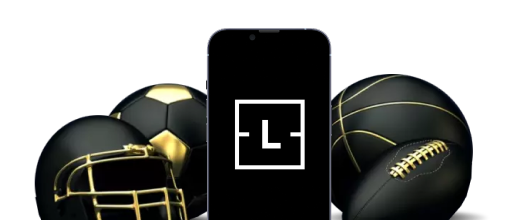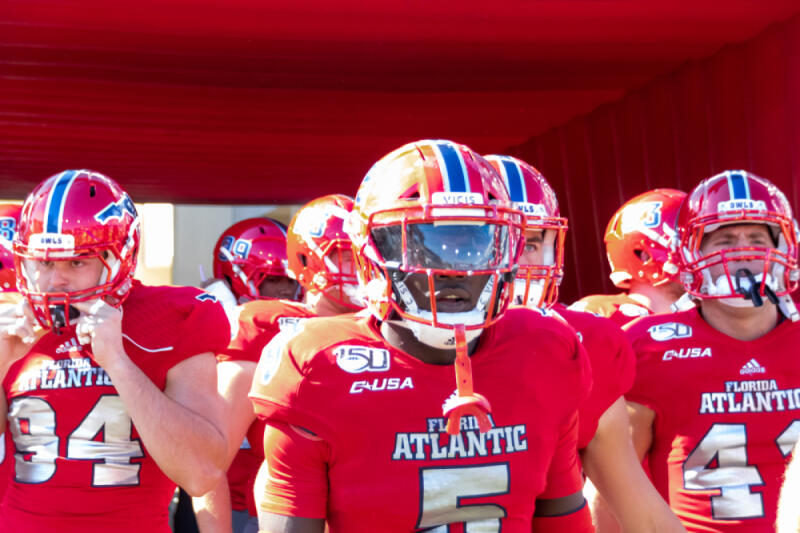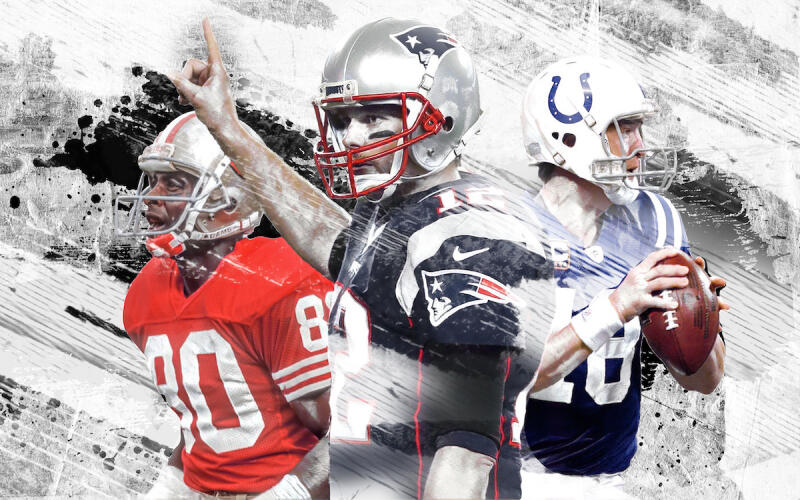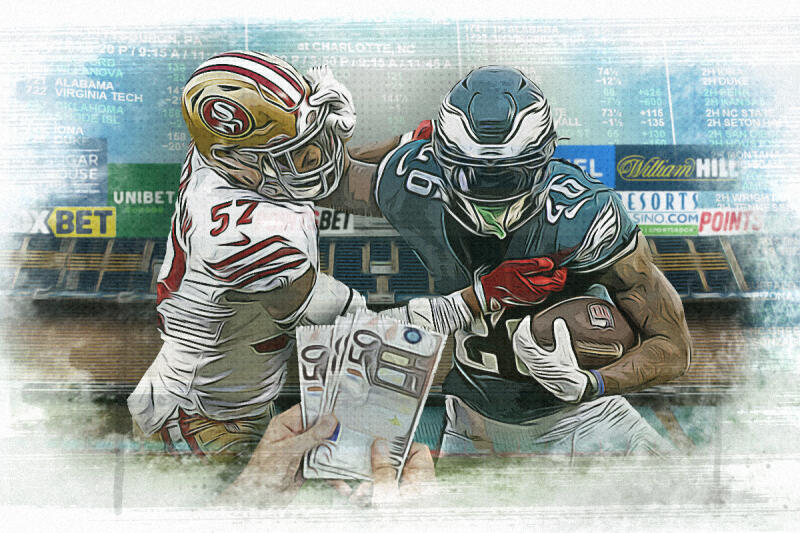Nike Air Force One: A History Behind the Sneakers
Nike's Air Force One (AF-1) shoe is a legend in sneaker culture and one of the best-selling shoes in history. The various styles and designs of the Nike AF-1 only help to broaden its fanbase, as their variety allows a sneaker fit for everyone at any age to enjoy.
Few shoes have seen such enormous success like that of the Nike Air Force 1, but it's the versatility of this classic that has kept them at the top amongst sneakerheads over the years. How did this phenomenon in the athletic footwear world come to be? We decided to take a walk down memory lane into the history of the AF-1 shoe from its initial release in 1982 to the present day.
Here’s what we found.
Nike Air Force 1: The History of the Famous Sneaker
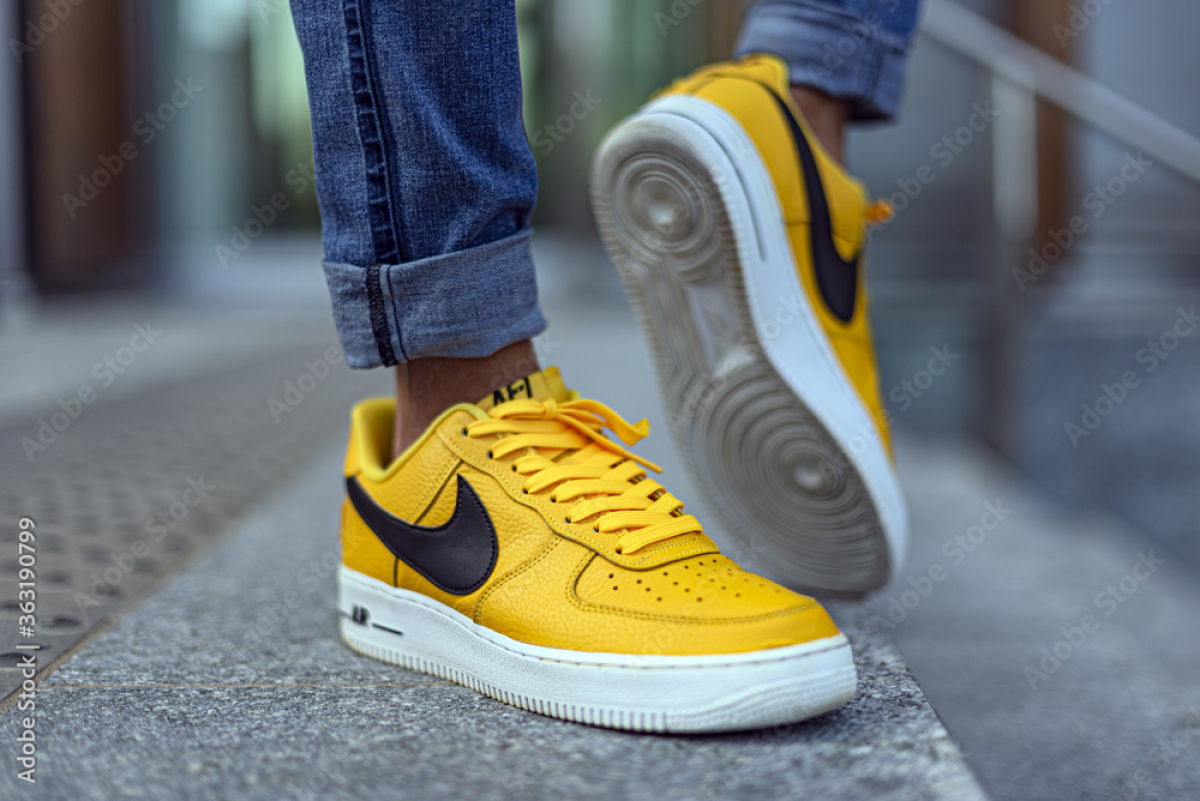
Over 40 years ago, when Nike released its infamous shoe, commonly referred to as Nike Air Force 1s or Nike AF-1s, the company was hoping to give their brand a boost within the sport of basketball. Using their newly patented Nike Air Technology with the idea that it could benefit NBA players on the court, the legendary sneaker was born. Fast forward to today and they have become a cultural icon.
While the shoe was far from Nike's first, it would catapult the brand into becoming a household name. NBA stars like Bobby Jones and Moses Malone were among the first to play wearing the AF-1s, helping to launch them within the league. While new technology in the market has had players switching to other brands recently, Giannis Antetokounmpo of the Milwaukee Bucks has brought them back by sporting them during the Bucks 2021 NBA Finals victory over the Phoenix Suns.
However, Nike's Air Force 1 success wasn't limited to the NBA, as hip-hop stars began to adopt the look and incorporate the name of the sneaker into the lyrics of their songs. The most famous example is when American rapper Nelly released a song in 2002 entitled “Air Force Ones”, which topped the charts and is still performed today.
So now that we have some familiarity with Nike's AF-1 line let's look at exactly how they got here.
History of the Nike Air Force 1: The Beginning
You can only tell the story of the Nike Air Force 1 brand by starting with the invention of Nike Air Technology. This groundbreaking technology came from Frank Rudy, an aerospace engineer who brought his creation to Nike in the 1970s. Rudy believed that using captured air could increase the cushion for athletes to better their athletic abilities and Nike agreed.
Nike would jump on the idea and secretly design it into a running shoe. In 1979, they debuted the technology in releasing the Nike Air Tailwind. This shoe would become a massive success with runners, leading Nike to explore where else they could implement their new cushioning system.
The shoe magnate would begin to study athletes from major sports to see where their Air Technology would be most beneficial. It did not take long to determine that basketball would be a perfect fit. This would lead Nike's Bruce Kilgore to design the company’s first basketball shoe, the Air Force 1. The sneakers debuted in 1982, in a white, high-top design style.
Related: The 50 Best Basketball Shoes of All Time
Nike Air Force 1 (1982-1991)
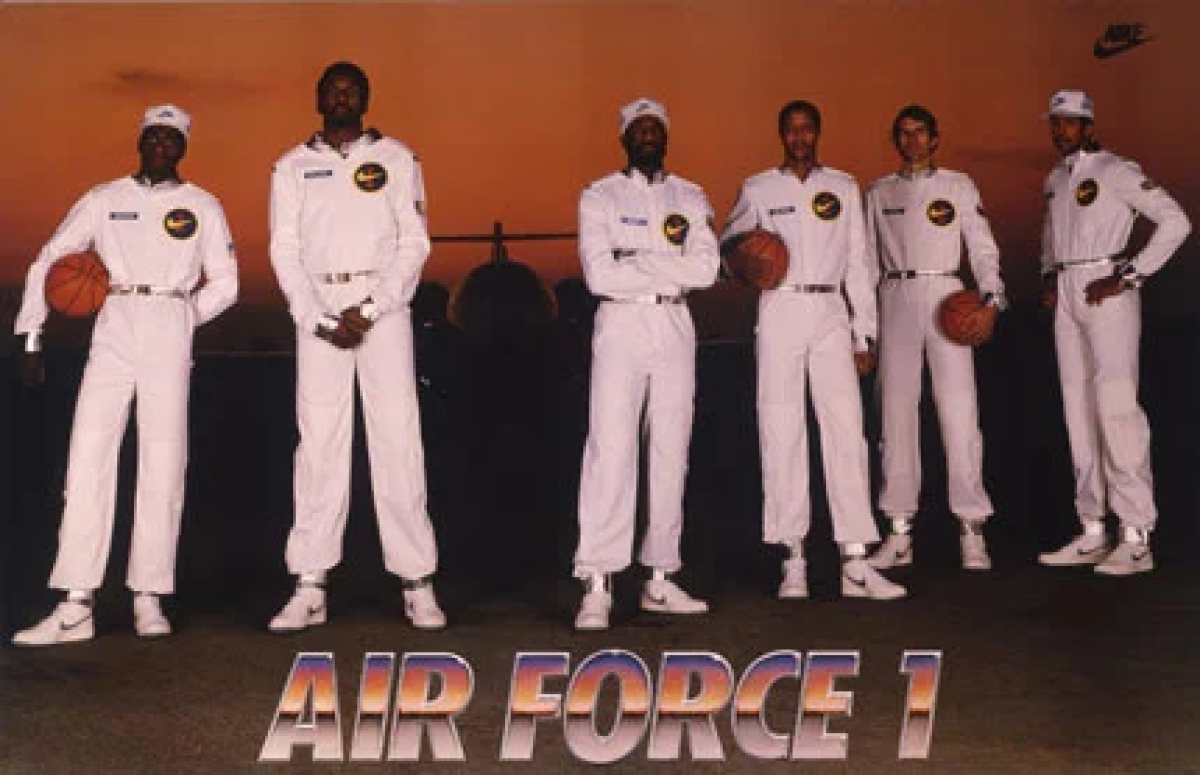
The Air Force 1 Original Six - Photo courtesy of Sneaker Files
Launched in 1982, Nike chose the name Air Force 1 for the sneaker as a nod to the name of the airplane used by the President of the United States. The shoe received praise for its unique design and functionality, with people likening it to an athletic hiking boot. The look was unique in the sport, and players quickly praised the Air Technology for improving their performances on the court. Nike would follow the widespread popularity of the AF-1s by rolling out a low-top version of the shoe in 1983 that would go on to become one of the most famous in the country, especially on the East Coast.
Nike wasted no time marketing their new shoe in the NBA by securing sponsorships of six of the NBA's top players in 1983; Moses Malone, Jamaal Wilkes, Calvin Natt, Mychal Thompson, Bobby Jones, and Michael Cooper. All six athletes began wearing the new shoe in games, leading the footwear to be worn by more top players across the league.
Nike Air Force history almost ended in 1984, when the company discontinued the shoe as it had originally planned to do from the start. The decision caused an uproar from players and fans alike, leading a group of retailers in Baltimore to push Nike to bring the shoe back with more designs. The group responsible for reviving the classic was headed by Downtown Locker Room, Cinderella shoes, and Charley Rudo Sports. Together they convinced Nike to allow them to create customized versions of the AF-1s in different colors by ordering the sneakers directly from the factory.
The Baltimore group's first order sold out almost immediately, leading them to establish a "Shoe of the Month Club," where they would offer a new color every month. This was when the Nike Air Force 1s would go from a basketball shoe to one of the hottest collector items in all of sneaker history.

The album cover that entrenched AF-1's in Hip-Hop culture- Photo courtesy of The Source Magazine
Their re-launch would be worthwhile, due to the shoe's popularity in the Hip-Hop community. It reached a new level of fans in 1998 when DJ EZ Rock wore a pair of the AF-1 trainers on the cover of his famous "It Takes Two" album. The legendary Hip-Hop artist wore a custom pair of white Air Force 1's that caught the eyes of millions of fans and led to even more success for the shoe line.
The 1992-2000 Era
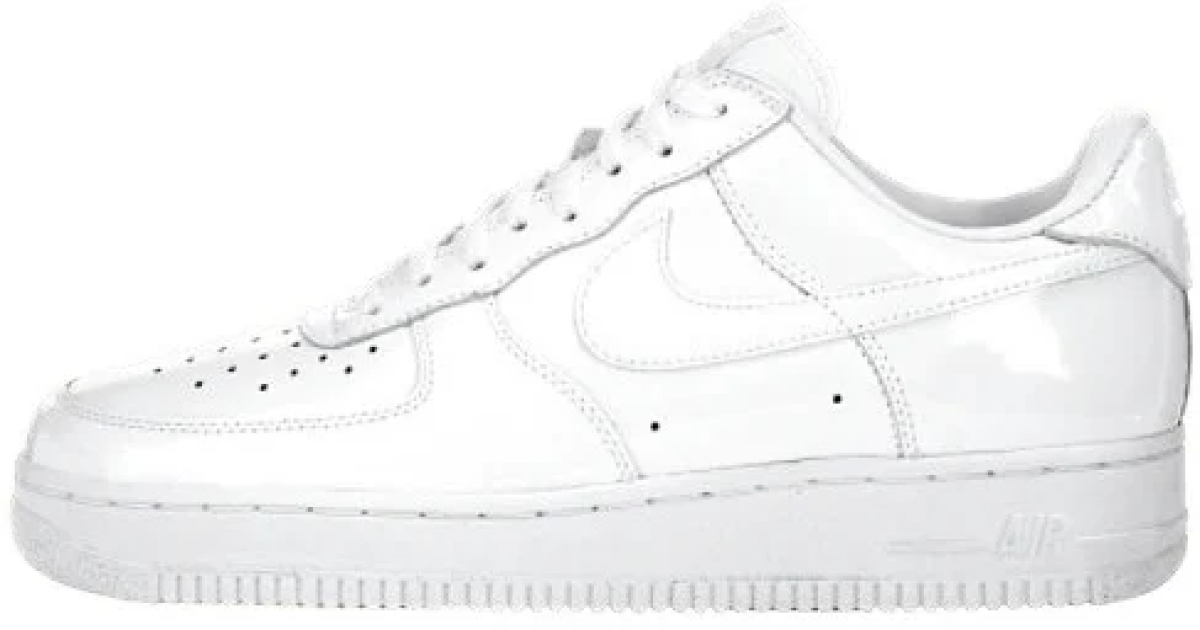
Nike AF1 lows circa 1996 - Photo courtesy of Sneaker Files
THe AF-1’s would enter a new wave of pop culture in the 90s, thanks in part to the introduction of the famous "white-on-white" lows. This new version ditched the mesh side paneling in favor of white leather, giving the shoes a crisp, clean look. There is some mystery about when the shoes were developed and released as a result of poor documentation by Nike. Some believe it was not until 1997, whereas others insist it was as early as 1990.
The white-on-white's rise in popularity was helped by the similar rise in the love of Hip-Hop culture in the 90s. After artists like EZ Rock were seen wearing these shoes on their albums and in public, they flew off the shelves and became a status symbol within the community. This spurred sales among fans across the nation, adding to the already excessive demand on the East Coast. While there was no shortage of artists looking to sport the AF-1s, arguably none are more prominent than Jay-Z. The Hip-Hop mogul referenced the AF-1 Lows white-on-white in one of his songs from his now famous “Reasonable Doubt” album.
With this genre of music now sweeping most parts of the nation and beyond, Nike decided to focus on the Midwest and West Coast. This included not only major cities but also their suburbs and everywhere in between. It was during this same time that Nike launched a line of mid-tops, giving even more options to sneakerheads all over.
In addition to expanding its sales, Nike also introduced a program called “Sneaker Gold” which offered a unique line of AF-1s meant for collectors and special occasions. It gave members the ability to pre-order new styles directly before they hit the shelves in stores. The program was short-lived, despite its popularity.
The 2000s
Nelly’s Air Force One megahit launched AF-1s into the new century -
While many 90s styles stayed in the 90s, the classic Air Force 1 sneaker kept climbing to new altitudes, leaping into the 2000s. Competitors were catching up and beginning to surpass the once-revolutionary Air Technology, but the AF-1s had already become more than just another basketball shoe. In 2002, Hip-Hop artist Nelly released the hit song "Air Force Ones." He was one of the hottest artists at the time and the entire song was dedicated to his love of the Nike sneaker.
In an interview with Complex, Nelly said, "Everybody that got Nike shoe deals need to be thanking us right now because we opened Nike's eye to a lot of that." While the claim is debatable, Nike could not have asked for a better campaign and launched a unique line with the Roc-a-Fella records logo added to their white-on-whites.
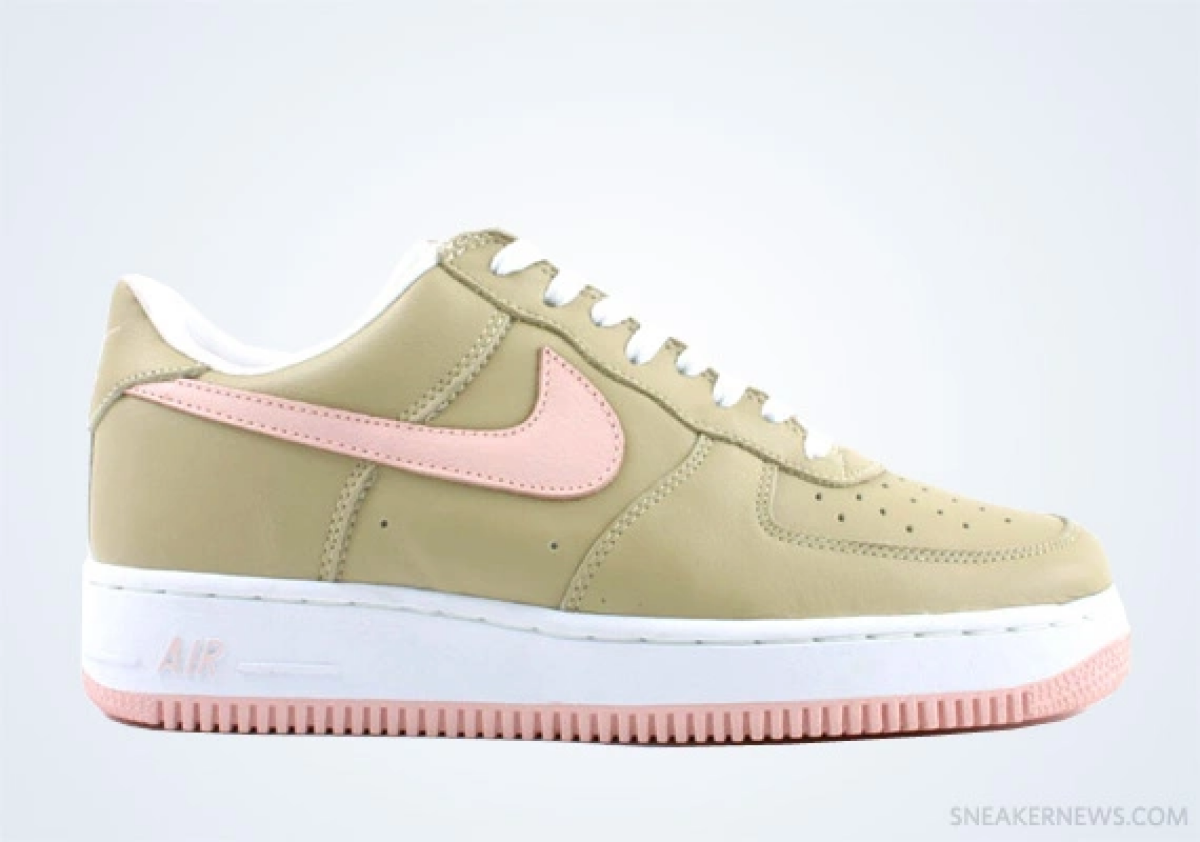
The Nike AF-1 Low Linen Shoe - Photo courtesy of Sneaker News
Now that the AF-1s had successfully captured the American market, they set their sights on going global. The first step they took was introducing a Nike AF-1 Low Linen edition shoe geared toward the Asian market. The sneakers took on a different look, with a pink swoosh over a brownish-gold outside. The design saw a significant departure from US versions, with some fans arguing it remains the best AF-1 shoe to date.
To celebrate the shoe's 25th anniversary, Nike added a new premium version of the beloved AF-1s in 2007. They unveiled the Nike Air Force 1 Low Anaconda Lux for $2,000. Though the price tag was too high for many, the shoe became a status symbol among celebrities and wealthier sneakerheads.
The 2010s
In 2012, Nike launched a new shoe version that used Lunarlon as a cushion instead of the trademarked air technology. They called these sneakers the Nike Lunar Force 1, designed to give people the feeling of walking on the moon. The shoe also featured a zipper and was constructed to help specifically with shock absorption, making them even comfier than its predecessors.
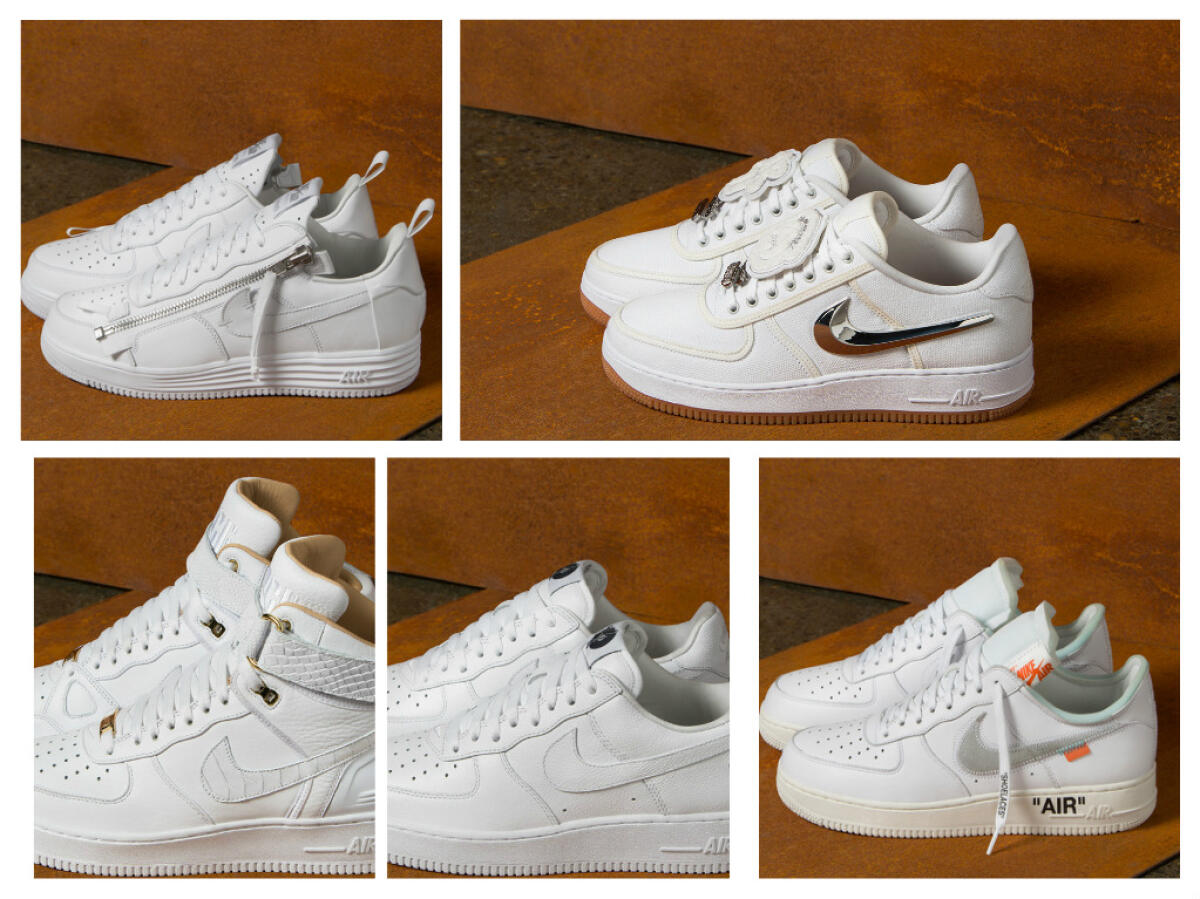
The full AF-100 collection - Photo courtesy of KicksOnFire
After the Lunar launch, Nike focused on re-imagining their classic white-on-whites to celebrate the 35th anniversary of the AF-1s. They hired a group of artists and designers, including Hip-Hop star Travis Scott, to come up with ideas. The result would be five new custom designs known as the AF-100 collection. Each designer and artist created their own version and all became top sellers from the moment they were released.
The 2020s
With the success of its 35th-anniversary collection, Nike turned its attention to their 40th anniversary. They followed it up by creating a collection that celebrated the shoes' role in art and Hip-Hop culture across the country. A fitting way to pay tribute to those that helped the AF-1 rise to prominence.
They released multiple low-top versions, each customized for a specific city whose culture has influenced the AF-1s over the years. The cities included Memphis, New York, Los Angeles, Houston, and Chicago. They named the collection the “Join Forces Pack", and it became another instant classic for the line.
The Future of the Nike Air Force 1
Although 40 years of a single shoe design is beyond impressive, the Nike Air Force line is far from done. With the sneaker having cemented its place in the footwear world, Nike will continue to partner with designers and brands to keep their AF-1 line updated along with the times. They currently have new versions set to debut later this year in partnership with high-end fashion companies like Louis Vuitton and Tiffany and Co. Many of these are going to be a departure from the original shoe style, signifying that Nike continues to adapt their most infamous creation with the everchanging times and their fanbase.

Nike’s soon to be released Louis Vuitton Air Force 1 Low “Faux Fur” - Photo courtesy of Nicekicks.com
While fur shoes may not be a must-add for sneakerheads, the future is bright for the Air Force line of shoes. With an array of new color combinations and designs, the AF-1's ability to change with the world will keep them in the mainstream of must-have sneakers for years to come.
FAQ
What is the history of Nike Air Force 1?
After launching in 1982, the shoes patented Nike Air Technology helped them gain popularity in the NBA and their style later made them a staple in Hip-Hop culture. This would lead to the continued 40+ years of wide-spread success.
When did Nike Air Force Ones first come out?
The first pair of Nike AF-1s launched in 1982 as a white high-top with a revolutionary air cushioning system geared to help basketball players and their performance.
How many versions of Air Force Ones are there?
As of 2023, there are over 2,000 versions of the Nike AF-1 sneaker in their over 40 year existence, with more to come.
What are the original Air Force Ones Called?
The first version of the sneaker was named the “Nike Air Force One" in reference to the name of the airplane that the President of the United States uses.
For further reading: Complete Divisional Alignment Guide
Our editorial content strives to be highly informative and educational to our audience, especially for visitors who are new or relatively new to analyzing and predicting sporting event results. All of our content is created by informed writers with backgrounds in their subject area and reviewed for omissions or mistakes.
Our editorial team is run by individuals with many years of experience in digital publishing, editorial, and content production. Our editorial content is always marked clearly in any instances where it may be sponsored by a third party, though it is still reviewed by our staff to ensure it remains consistent with our company mission.
- Popular
- Latest

